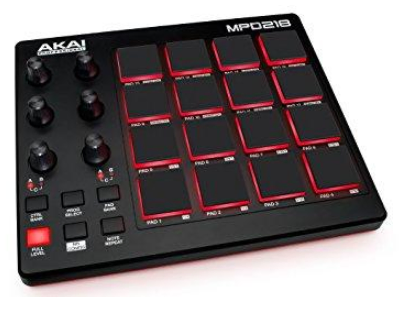music production, Uncategorized
What is Music Production? Part IV
What is Music Production? Part IV – Full analysis In this series of articles, I will be looking at music production, explaining what it is and how it works for newcomers and beginners to the art form.
————–
In the previous article in this series I looked at how Audio Interfaces are used to record and produce music on a computer. In this article I will look at how MIDI is recorded/programmed into a computer.
To record MIDI data into a DAW you need a MIDI controller, this often takes the form of a regular keyboard like this:
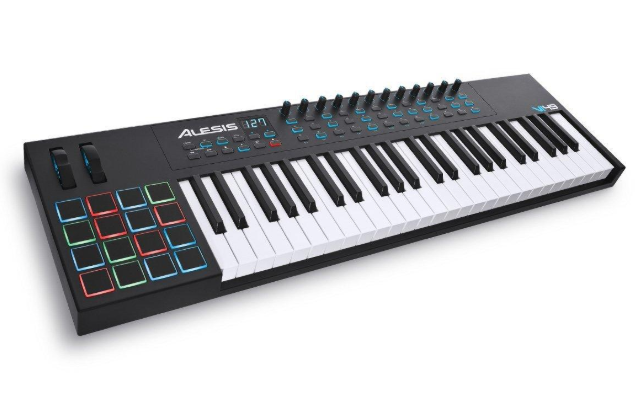
Though different types of MIDI controllers exist for different musical purposes, for example this drum pad is also a MIDI controller:
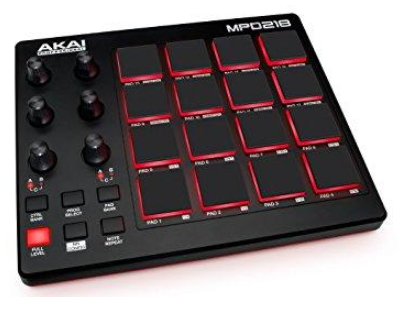
These devices can be connected to a computer with a USB cable, they then act as a controller, controlling whichever virtual instrument is loaded in the DAW.
MIDI data can also be programmed using a regular computer keyboard and a mouse, where you can input one note at a time and shape all aspects of the musical performance including the volume, length of the note, expression, rhythm etc…
The MIDI that has been recorded or programmed will appear in the piano roll which each DAW has, this is where the editing of the MIDI takes place.
Here’s an example of the piano roll in Cubase:
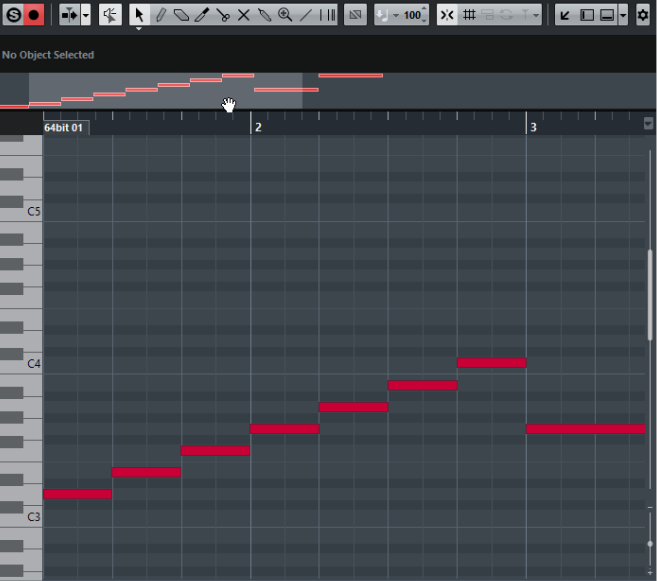
The piano on the left determines the pitch of the notes, the grid lines and length of the red blocks determine the rhythm of the notes and the vertical red lines below determine the velocity of the notes.
Any virtual instrument can be triggered by MIDI data on the piano roll, however a virtual drum kit can use the piano roll slightly differently for editing and will look something like this:
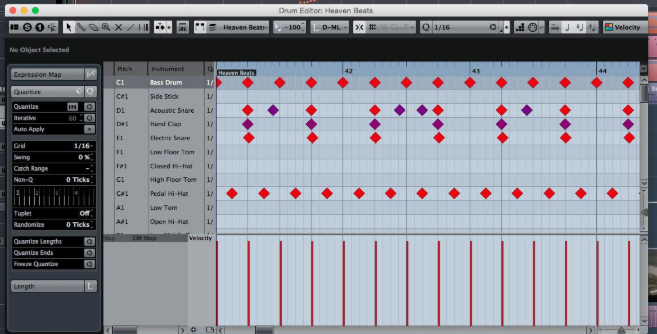
As drums are non-pitched and rhythmical, the piano notes are responsible for the different pieces of the drum kit i.e. bass drum, snare, hi-hat.
On the other hand, in the initial stage of music production, sound selection is very important, this is more than just choosing the instruments that you will record and/or program but about they sound and fit in with the genre of music you are making.
Let’s take the piano as an example, when producing a classical recording you would most likely choose to record a real grand piano, using a matched pair of condenser microphones to record the bass strings and treble strings, capturing the spread of the notes and frequencies across the instrument. The sound of this piano would be natural and dynamic in nature. In contrast to this, of you were producing a modern dance song then you most likely wouldn’t record a real piano, instead you may program a piano part using MIDI to trigger a sampler piano, this would then have a harder attack to the notes, be brighter and much less dynamic. Both sounds are appropriate for their respective genres, if you were to swap them around then it may not work, having a real, natural sounding piano in a contemporary dance track would get lost in the mix of the hard drums and synth sounds, conversely having a hard MIDI piano sound playing a classical piece would also sound out of place.
With these things in mind, it is important to select the right sound of the instrument for the genre you are making. This process can take a long time, with some producers working on the right drum sound for weeks until they are happy to start recording properly. Though potentially time consuming, it is one of the make or break aspects of successful music production, selecting the right tone and timbre before recording will make all the difference to the finished product.
To be continued with Part V of Music Production.
#musicproductionteachers #musicproductionlondon #musiclessonslondon #musicproductionlessons

